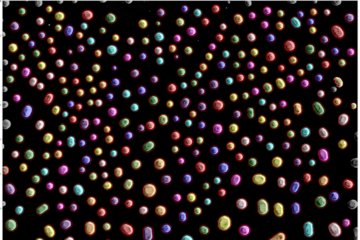All genres
21.
Talk
On the Reconstruction and Analysis of Interfaces in 3D-EBSD Datasets. RMS EBSD Meeting 2012, Teddington, UK (2012)
22.
Talk
Recrystallization and grain growth in ultra fine grained CuZr alloy processed by high pressure torsion. Materials Science and Engineering MSE 2010, Darmstadt, Germany (2010)
23.
Talk
Characterization of the microstructure of ultra fine-grained materials processed by severe plastic deformation methods in the deformed and the annealed state. Materials Science and Engineering MSE 2010, Darmstadt, Germany (2010)
24.
Talk
Recrystallization and grain growth in ultra fine grained materials produced by high pressure torsion. Recrystallization & Grain Growth 4 RX&GG, Sheffield, UK (2010)
25.
Talk
3D EBSD: Tomographic orientation microscopy in a FIB SEM. E-MRS 2010 Spring Meeting, Strasbourg, France (2010)
26.
Talk
Microstructure and Texture evolution during high pressure torsion of a CuZr alloy. Euromat 2009, Glasgow, UK (2009)
27.
Talk
Microstructure and Texture evolution during high pressure torsion of a CuZr alloy. 15th International Conference on the Strength of Materials ICSMA 2009, Dresden, Germany (2009)
28.
Talk
3D tomographic EBSD characterization of crystal topology in a CuZr alloy processed by equal channel angular pressing. Interdisciplinary Symposium on 3D Microscopy, Interlaken, Switzerland (2009)
29.
Talk
Microstructure and texture evolution during high pressure torsion of a Cu0.17wt%Zr alloy. DPG Frühjahrstagung 2009, Dresden, Germany (2009)
30.
Talk
Thermal stability of ultrafine grained Cu-0.17wt%Zr. Materials Science and Engineering - MSE 2008, Nürnberg, Germany (2008)
31.
Talk
Three-dimensional tomographic EBSD measurements of the crystal topology in heavily deformed ultra fine grained pure Cu and Cu-0.17wt%Zr obtained from ECAP and HPT. 4th International Conference on Nanomaterials by Severe Plastic Deformation nanoSPD 4, Goslar, Germany (2008)
32.
Talk
Three-dimensional tomographic EBSD measurements of the crystal topology in heavily deformed ultra fine grained pure Cu and Cu–0.17wt%Zr obtained from ECAP and HPT. DPG Frühjahrstagung 2008, Berlin, Germany (2008)
33.
Poster
Towards Comprehensive Crystalographic and Property Characterization of Grain Boundaries. Fachbeiratsitzung 2013, MPIE, Düsseldorf, Germany (2013)
34.
Poster
Exploring the formation of different lamination configurations within the orientation space. 11th GAMM-Seminar on Microstructures, Universität Duisburg-Essen, Essen, Germany (2012)
35.
Poster
Advanced crystallographic & topological analysis tools for tomographic characterization of interfaces and deformation structures obtained via 3D-EBSD. Fachbeiratsitzung 2011, MPIE, Düsseldorf, Germany (2011)
36.
Poster
Three dimensional characterization of microstructure of an ultra fine- grained Cu–0.17wt%Zr. 1st MACAN 2009, Berlin, Germany (2009)
37.
Thesis - PhD
Microstructure characterization of ultra-fine grained Cu–0.17wt.%Zr. Dissertation, RWTH Aachen, Aachen, Germany (2011)










